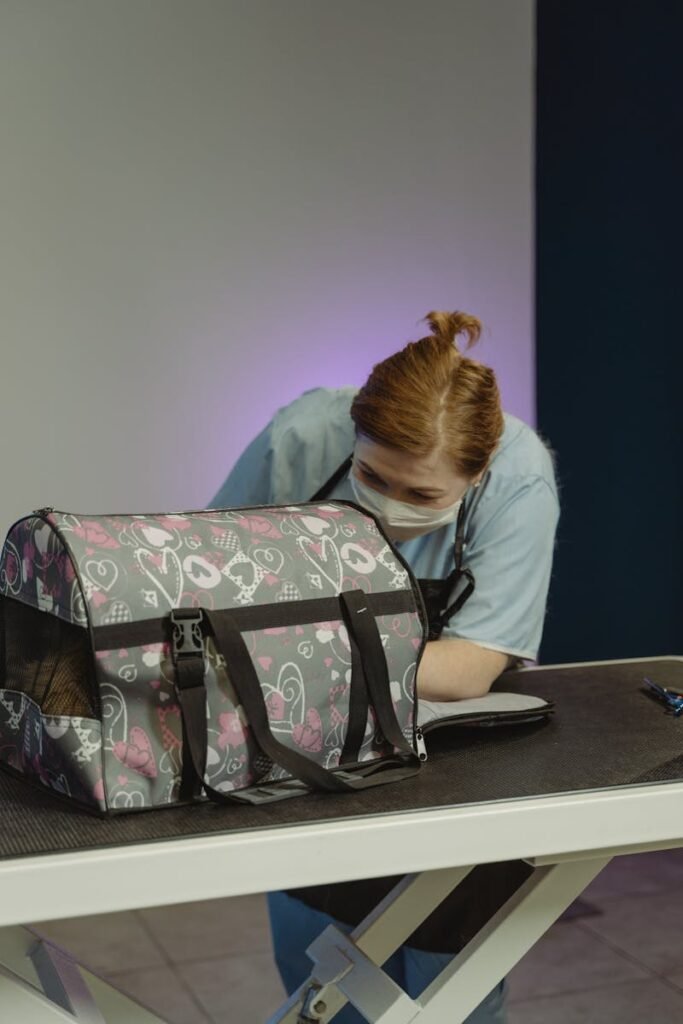How to Re-home a Cat with a Traumatic Background
We’ve seen many weather events that leave cats homeless and abandoned. Floods, hurricanes, and economic hardships impact people and cats alike. When it comes to re-homing a cat, especially one that has a traumatic background from a shelter or has been abandoned, you need patience and understanding. A strategic approach to re-homing the cat helps too. Here’s how responsible cat owners can help their new cat settle into a new and loving home.
Understanding Trauma in Cats
Just like humans, cats can experience trauma that might lead to behaviors indicative of PTSD and anxiety. It is common to find cats that have experienced abuse, neglect, and sudden changes in environment. Recognizing these symptoms is crucial.
Behavioural changes might be apparent where a cat has trauma. You will see this with increased aggression, and fearfulness of people and other animals. This will manifest itself with the cat going into withdrawal and hiding.
Physical symptoms may be apparent in cats experiencing trauma. You might see trembling, ununsual changes in appetite, and grooming habits that appear manic or obsessive.
Preparation for Re-homing
A first step is to create a safe space for the cat. Designate a safe space in your home where the cat can recover. Set up a quiet, low-traffic, area that has food, water, litter box, and a cat bed. An internal cat house is ideal so the cat feels safe. There shouldn’t be any threats near the safe space. Children running, or energetic dogs and other cats, should be kept at a distance so that the cat has a sense of control over its environment.
Having familiar scents may induce a sense of calm for the cat. Over time, you can introduce your scent, or scents of other pets if around. This way the cat can get accustomed to the new smells gradually.

Health Check
You should absolutely visit a veterinarian for a health check for your cat. This is non-negotiable. There may be symptoms and health issues that only a veterinarian can discern. For the cat’s physical health, there should be administered up-to-date vaccinations, and checks for parasites. The vet will know whether the cat is spayed or chipped, and can attend to any medical needs the cat may have.
The Transition Phase
A slow transition is preferred so the cat can explore its new safe space. Over days, the cat can explore the area around the safe space including rooms and other areas in the home.
Using pheromones can promote a sense of security and reduce stress. Products like Feliway can mimic feline facial pheromones and can be used while the cat is in the transition phase.
Building Trust
As the cat is getting used to its environment, reward calm behaviour with treats or gentle petting. There’s no need to force interaction. Let the cat initiate contact first.
As cats thrive on routine, be consistent with feeding times and play sessions. It’s great to have consistent quiet times as this helps establish trust and predictability.
Addressing Behavioral Issues
Some cats may have behavioural issues that are just too hard for a new owner to cope with. In this situation, reach out to a cat behaviorist or a vet that specializes in cat behavior. They will need to be proficient in techniques like desensitization and counter-conditioning. These are not easy to learn for a new cat owner so seek help if you are over-whelmed.
But if you are addressing manageable behavioral issues at home, try using toys that mimic prey as these can help a cat redirect aggression or anxiety into play and exercise. Climbing trees can irresistible for cats as they rise and climb above any perceived or real threats and get to use their claws in a real way. Puzzle feeders can mentally distract a cat and help with boredom or anxiety. Having hiding spots in the home is something cats love so ensure there’s a few of them around.
Queenmore Small Dog Sweaters, Soft Fleece Vest Pullover Dog Jacket with Leash Hole, Warm Winter Dog Clothes Cold Weather Doggy Dachshund Sweater for Small Dogs Cats Boy or Girl (Red, S)
$24.99 (as of November 20, 2024 01:38 GMT +00:00 – More infoProduct prices and availability are accurate as of the date/time indicated and are subject to change. Any price and availability information displayed on [relevant Amazon Site(s), as applicable] at the time of purchase will apply to the purchase of this product.)Summit Animal Health Lift Feline Pain Relief Supplement Inflammation Hip & Joint Support Vitamin for Cats – Natural Chondroitin with Liposomal Delivery for Arthritis – Drug Free – All Ages
$24.99 (as of November 20, 2024 01:38 GMT +00:00 – More infoProduct prices and availability are accurate as of the date/time indicated and are subject to change. Any price and availability information displayed on [relevant Amazon Site(s), as applicable] at the time of purchase will apply to the purchase of this product.)Long-term Care and Integration
If you other pets, having controlled introductions is vital to integrate your cat into the family. Try using barriers like baby gates initially. This will allow visual and scent introductions without physical contact. Make this process gradual. Other pets in the house may also feel anxiety by having another pet in the house. Watch for signs of stress, and if this is evident, go slower with the integration.
If the pets can play and interact together, encourage this by positive associations. But keep these interactions under supervision until you are confident the pets can play together nicely. All pets should be able to retreat to their own safe spaces if they’ve had enough.
A Journey of Patience and Love
Re-homing a cat with a traumatic background is not just about providing a new home; it’s about offering a sanctuary where healing can occur. You will need to have patience and understanding as this process might take a long time. Don’t be hesitant in seeking professional or community guidance if things get too much. Every small step towards trust and comfort is a victory in re-homing a cat and turning a traumatic past into a hopeful, loving future.







